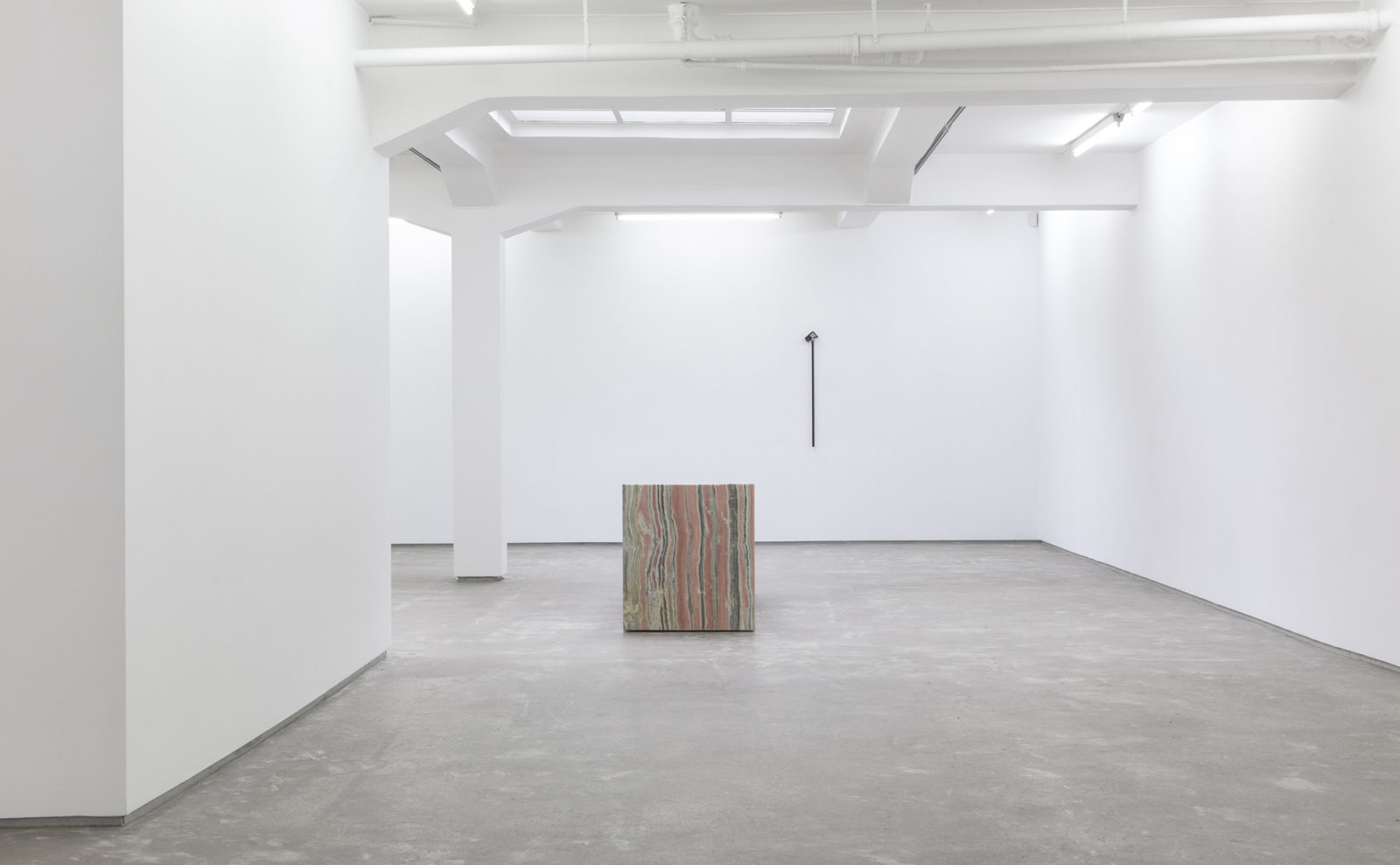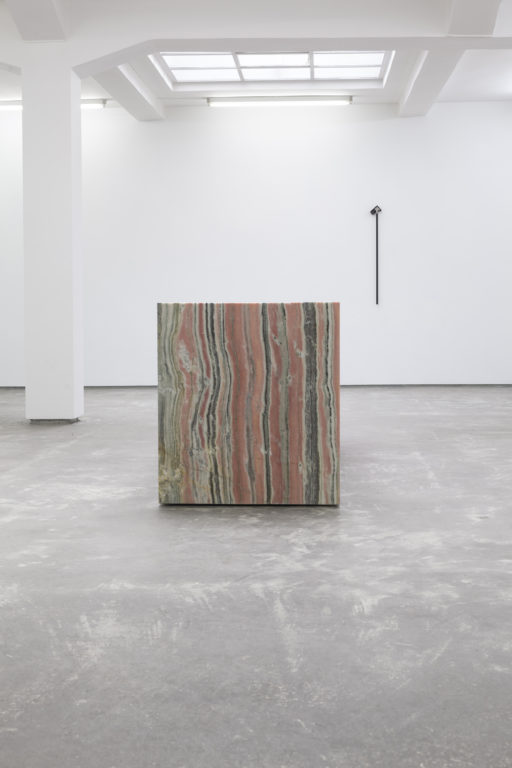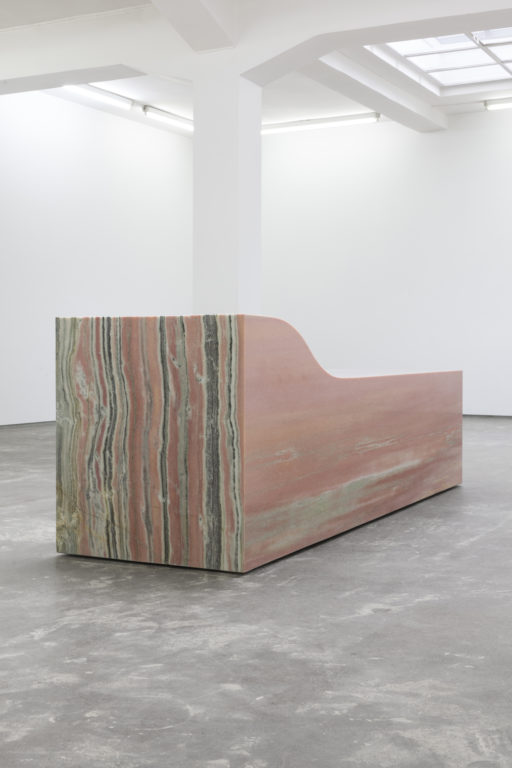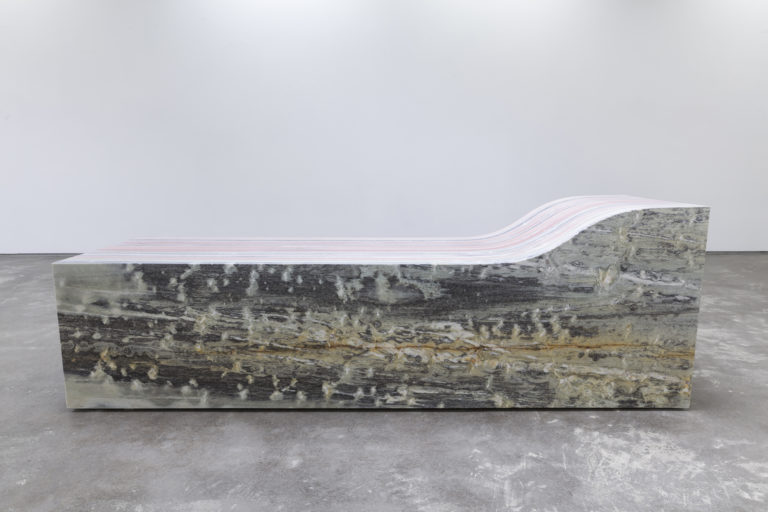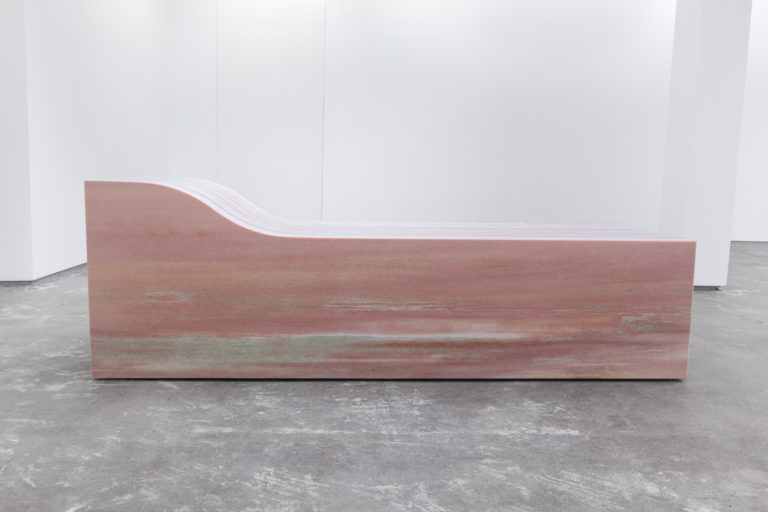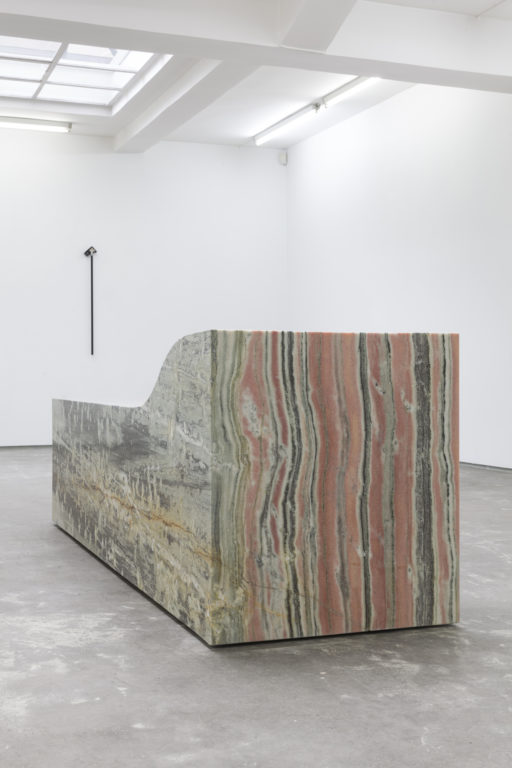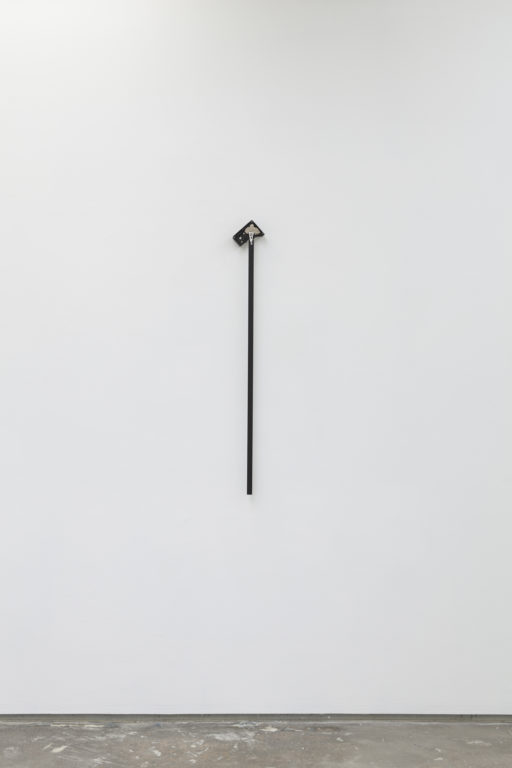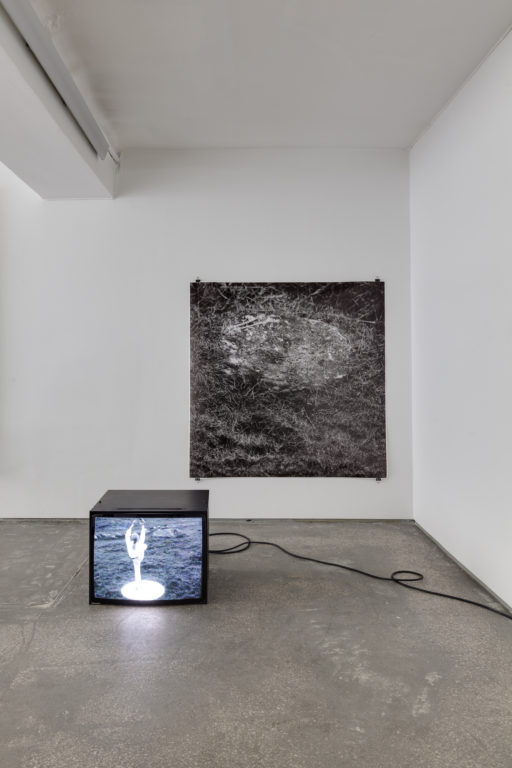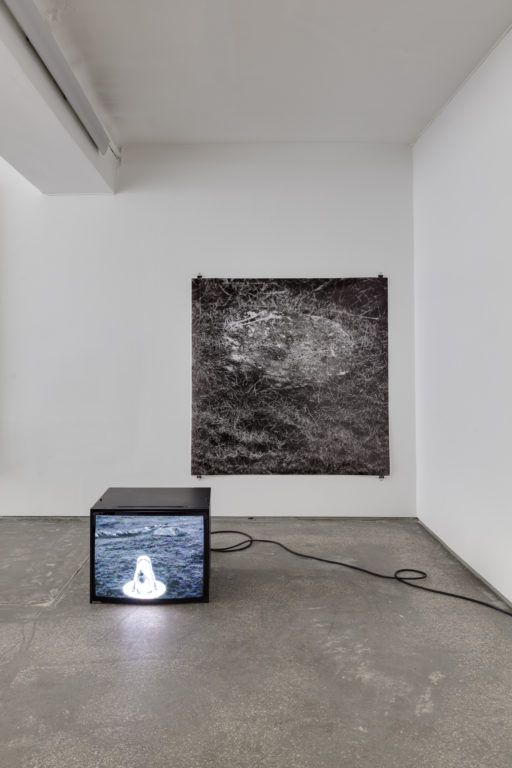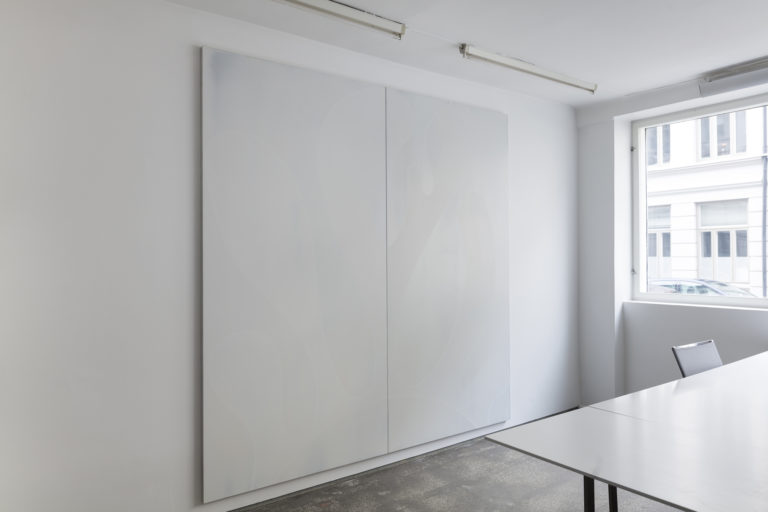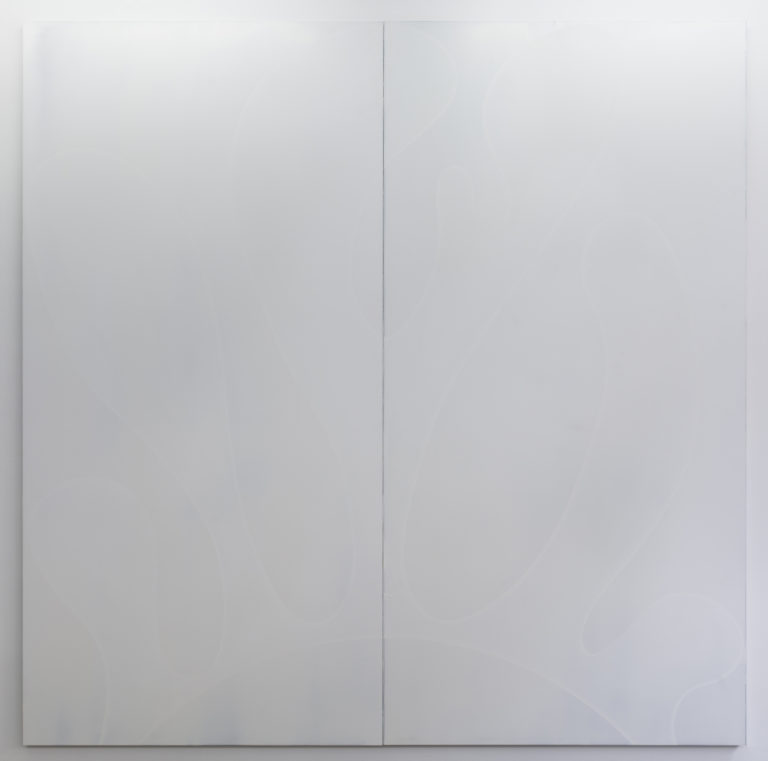OSL contemporary is proud to present the exhibition seng og sekund (bed and second) by the Norwegian artist A K Dolven.
Through three new works – the kinetic a second (2019), the natural marble sculpture bed (2019) and the video and photographic work to you 1994-2018 (2018) – Dolven examines the nature of time and our phenomenological perception of it. Incorporated both as an element and a material, time is a recurrent theme in Dolven’s practice, where the body in contact with nature is seen as a vessel to perceive time.
The grandfather clock/ the pendulum swing
A pendulum is loosely defined as something hanging from a fixed point, which, when pulled back and released, swings down by gravity and then out and up due to its inertia.
A period of a pendulum is two swings, a left swing and a right swing.
The time of a period depends on the pendulum’s length, if all other factors remain constant. The longer the pendulum, the longer the period.
Around the year 1602 Galileo Galilei discovered that a pendulum was ideal for timekeeping because it is isochronous: a pendulum swings regularly, at equal time intervals, disregarding the angle of the pendulum before the swing.
In 1656, Christiaan Huygens used Galileo’s invention to create the pendulum clock, the world’s most accurate timekeeping technology until the 1930s. To many known as the technology inside the grandfather clock, the pendulum swing served as a time standard for households and businesses. Also referred to as the seconds pendulum, it measured 0.994 m (c. 1 m) with one second to go left and one second to return.
In physics, time is defined by measurement; it is something fixed and quantifiable. Dolven’s unique striped marble, which can only be found in the small, family-run Koloritt Quarry in Fauske (67.2º N) is several million years old. The marble is repurposed as a bed, inviting the viewer’s body to touch ageing nature. With every steady pendulum swing, the Fauske marble ages; with every pendulum swing we are a step further away from past experiences.
Subjective time perception
Mechanical clock-time organises much of our daily lives. The subjective sense of time, however, can be experienced as magnified in periods of boredom and as contracted at moments of excitement. The philosopher Henri Bergson distinguished between the quantitative time of measurement and the more qualitative rhythms of perceptual and material “durations”, i.e. real time. According to Bergson, real time is wholly qualitative and cannot be measured unless it is symbolically represented in space, through events. The perceived time interval between two successive events is referred to as ‘perceived duration’.
In the 16 mm film to you 1994-2018, a 12-year old girl searches and stretches on a white circular slab of Thassos marble in a field by a coastline. The girl’s focus is turned inwards and on her own movements. The slab was installed by Dolven in Sandnes, near Stavanger, in 1994. In 2018, the artist returned to Sandnes, where she found her sculpture covered in moss, almost unrecognisable. The pigment print of the stone is in the scale of 1:1 presented next to a video monitor with the film of the girl from 1994. The passing of time is perceivable through nature: the changes to the stone from 1994 to 2018 marks a temporal arc of 24 years.
Time is both a physical dimension of the universe and a dynamic, fluctuating process of change that leaves long-lasting impressions upon us. Our episodic (autobiographical) memory allows us to access our own pasts; we can relive past memories in our present consciousness and access past-felt emotions such as grief, love or regret so that our past can influence our present feelings. Time is the way that we measure change, and change is the way we give some sense to the passage of time – from one milestone, however small or large, to another.
The exposed mechanics of the hard disk of Dolven’s 1-m long pendulum a second is a purposefully visible snapshot of our present, technological time. It is specific to the current historic moment, observed by Dolven to be a contemporary, or inconstant, feature – a changeable part of a constant phenomena: the swing of the pendulum from one period to the next, past Galileo, past Huygens and ahead, past magnetic technology.
A K Dolven’s work provides access to time as a phenomenological study, where personal events and emotions are markers that break up time. The perceived duration between the beginning of an emotion and where it ends. This individual perception is seen in relation to the fixed and quantifiable measures of time we experience through our environment and the changes that occur to the existential condition of the individual.
With generous support from: Tale Dolven, Element Arkitekter, Florian Kosche DIFK, Sensorteknikk, Fauske Koloritt, Johansen Monumenthuggeri, Fellesverkstedet, Hans Christian Skovholt, Ruby Paloma and Gabrielle Paré.
Saturday April 6, on the last day of the exhibition and as part of OSL series, A K Dolven has invited contemporary dancer Tale Dolven to perform live within the exhibition.
Tale Dolven has collaborated with A K since the age of 12, then in the work to you (1994) up until most recently in A Other Teenager (2016). Dolven is based in Brussels and work internationally with theatre, dance and choreography. She performed at the opening of the Turbin Hall, Tate Modern, London as well as the Centre Pompidou, Paris together with acclaimed choreographer and dancer Anne Teresa De Keersmaeker of the Rosas Company.
Tale Dolven currently works with the Nature Theatre of Oklahoma, co-produced by Ruhrtriennale and Dusseldorfer Schauspielhaus
A K Dolven (b. 1953, Oslo) lives and works in Lofoten and Oslo. She has lived and worked in London and Berlin for over 30 years. Her practice spans a variety of media, including painting, sculpture, photography, performance, installation, film and sound. She has exhibited extensively at leading art institutions and galleries across the world with solo exhibitions at Ikon Gallery, Birmingham (2015); Platform China, Beijing (2010); Aros, Århus Kunstmusem (2004); Kunsthalle Bern (2001); Kunsthalle Nurnberg (2001); and The Philadelphia Museum of Art (1999), amongst many others. Her work is included in the collections of The Art Institute of Chicago, IL; The Arts Council Collection, London; The Hoffmann Collection, Berlin; KIASMA, Museum of Contemporary Art, Helsinki; The Louisiana Museum of Modern Art, Humlebæk; Museum of Contemporary Art, Oslo; Philadelphia Museum of Art; and The Tate Collection, London. Forthcoming exhibitions include the Quebec City Biennial, Quebec; OCAT, Shanghai; and an exhibition at the New National Museum, Oslo.
